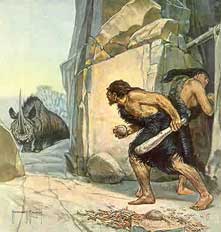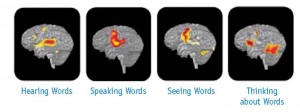 Your social genes haven’t changed in the past 200,000 years. They are still the same as when humans were hunter gatherers, the stone age. Social genes are the genes that define behavior.
Your social genes haven’t changed in the past 200,000 years. They are still the same as when humans were hunter gatherers, the stone age. Social genes are the genes that define behavior.
Where do we see this? Hunter-gatherers were not adventurous. They didn’t go hunting again, until they had to. They preferred to share, to be nice to each other, that way they didn’t have to risk confrontation. This lived in clans, hunted in clans, and followed the leaders.
They judged everything by their first impression of it, or by prejudice: they didn’t experiment, didn’t stop to think, didn’t give second chances. A wolf in sheep’s clothing would be accepted as sheep.
And yet, this bunch of scared followers now live in cities, drive cars, study at universities.
But the social genes didn’t change, not at all.
So what gives?
Enter brain plasticity.
 Brain plasticity says that if you use a certain skill, if you practice a certain behavior, you can make it stick because the brain is able to accommodate as an acceptable behavior.
Brain plasticity says that if you use a certain skill, if you practice a certain behavior, you can make it stick because the brain is able to accommodate as an acceptable behavior.
But the genes underneath are the same. The moment you stop the behavior, the brain plasticity now works the other direction: back to square one: hunter gatherer behavior.
All development depends on the individual. The individual who is willing to act counter to the genes, counter to fear, counter to first impressions, counter to staying in and holding onto what we have.
All development depends on the individual who is willing to risk it all.
At some point, at a critical mass, that new way of being will become a genetic change.
We are not close to that.
Now, here is the conflict: living small, staying small, giving in to fear, is counter to the soul’s purpose, or whatever you want to call the part that is unique to humans, the part that is interested in going out and play, going out and risk, going out and make new things.
A few years ago I did some DNA activation, thinking that the problem is in the DNA. I am still following some of the students I did that with: they all went backwards, and they all are now shrunk even more than they were when they started.
When you see more, feel more, able more, by DNA, but you still have the habits of shrinking violet, you will suffer. Non-feeling is more pleasant. Or you have the option to live consistently with soul’s calling… but it takes consistent action, doing what is outside of your comfort zone.
Brain plasticity works then to your advantage.
The happiest people have come out and started to play, invent stuff, confront stuff, build stuff, risk and risk and risk. Risk love, risk agreement, risk money and safety.
Most didn’t start with risking everything they got: they started early, and they risked a little more as they grew.
They climbed trees, they went on hiking, they took stuff apart they didn’t know how to put together, they did their math homework never checking the solution… they read books and they didn’t know how it was going to work out: they stayed with the fear till the end.
As an adult you have your disadvantages, now everything scares you, and you survived… unhappy, unfulfilled, alone, but survived. That is a big hindrance to growth.
Some come to class and risk looking bad, being seen, telling the truth. They take on small tasks that they know they can’t do.
The ones that stick with it, start to employ brain plasticity, and start growing to be more in harmony with soul’s purpose.
Many don’t grow, because they translate every exercise to something that is comfortable. They don’t grow because they resist risking… they have the pretense, and no growth.
Pretense doesn’t activate brain plasticity.
Children grow naturally, but adults need pain or lack to make them move. Remember the hunter gatherers? they didn’t go out to hunt again until they were hungry.
The pain you experience can be your best friend. Don’t suppress it, don’t will it away, don’t go to energy practitioners to do away with… they are your allies to start growing. Brain plasticity kicks in even after a few consistent use of a new behavior.
Really.
Then you can become the individual who broke out of the mold where a stone age person is suffering in a world of seeming plenty.


